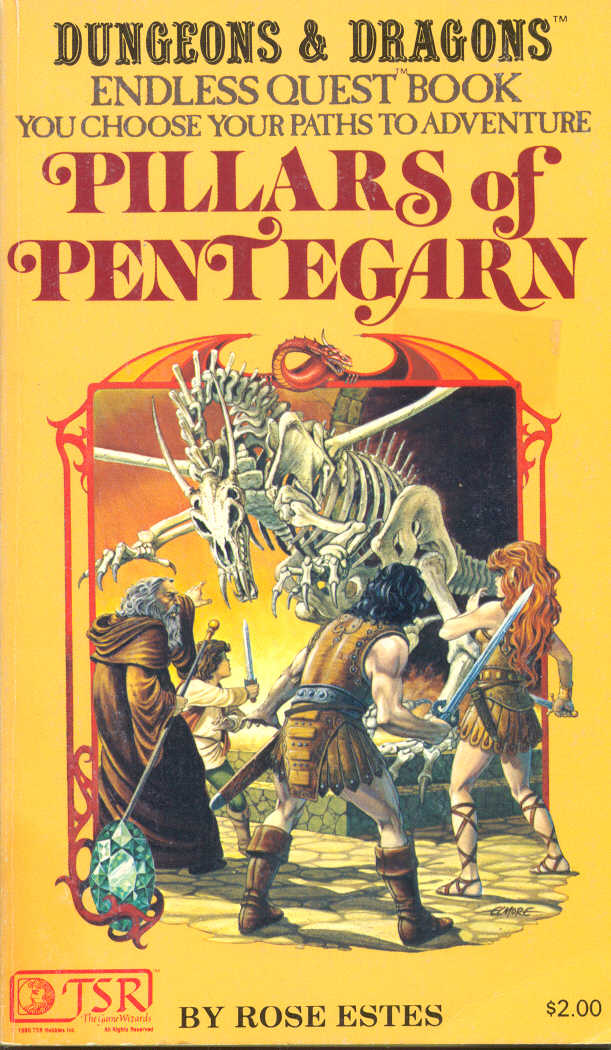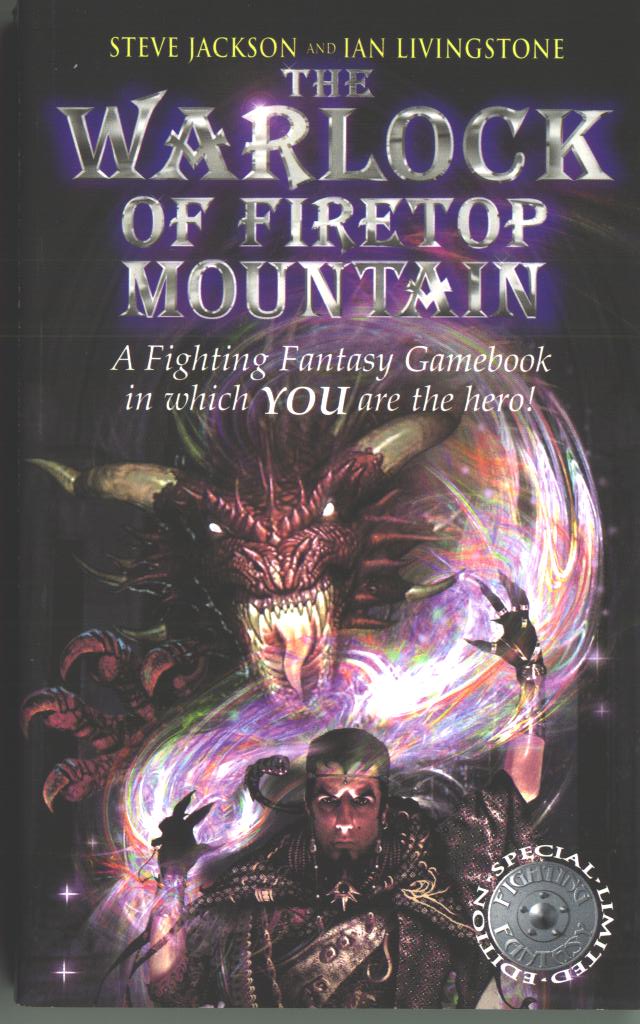One great thing about writing my blog is that I have discovered off shoots from gamebooks that intrigue me. One of these is the idea of solo gaming. One great proponent of this genre is John Fiore, the author of the Solo Nexus blog, a blog devoted to solo games.
I first came across the blog when I was looking for Advanced Fighting Fantasy material and I came across John's intriguing posts. Ever since then, I've been hooked on his entertaining and comprehensive blog on the art of solo gaming. For more information, look at John's Soloist's Bookshelf and Soloist's Toybox pages.
There is a lot of solo gaming going on, so I am thankful to John for introducing me to it.
Here is the interview...
What is your favourite gamebook?
You’ll be shocked to know that it’s 1982’s Pillars of Pentegarn by Rose Estes. Sure, it was a bit of TSR D&D claptrap that you really didn’t “play,” but it was a significant source of inspiration for me. I had just discovered B/X D&D quite by accident just beforehand, and I was fascinated by the concept of the RPG. Unfortunately for me at that time, I was a little kid living with his grandparents in a rather rough area of NYC that was definitely notconducive to “nerdy” pursuits; RPGs were of little interest to my inner city peers, to say the least! So, I began to “re-write” Pillars of Pentegarn by inserting game stats and extra scenes that turned it into my first and favorite gamebook!
Always start with the classics, and, for me, that would be The Warlock of Firetop Mountain. Though it may lack the snap and sophistication of later works, its sincere charms and pure fun make it the right “first taste” for a newcomer before trying more complicated fare.
How is a solo game different to a gamebook?
Different players will define solo gaming differently, but, in general, solotabletop gaming is any non-video-game experience that presents to a lone player challenges of emergent strategies that are as captivating as the ones put forth by flesh-and-blood opponents. Those challenges can come from using the rules to beat a set of conditions, pitting one’s wits against an “artificial intelligence,” or manipulating multiple sides in a conflict with only limited control. A gamebook very much fits within the artificial intelligence model of solo gaming and it adds qualities of literary entertainment that make it a unique experience, albeit one dependent on the skill of the text’s authorship.
Do solo games have to be designed for one person or can you take a multiplayer game and somehow adapt it for solo play?
Games deliberately designed for solo or cooperative play tend to be the most satisfying, but some multiplayer games can be adapted quite reasonably. In fact, there’s a small contingent of solo enthusiasts who spend most of their time doing adaptations of games that were never meant to be played solo! They enjoy the design challenge, and tinkering so intimately with the mechanics makes them beasts when they later play against others.
 |
| I had to include this picture of a solo game as it also includes a cat. |
Can you adapt any game for solo play?
Definitely not. Games that rely heavily on player interaction – especially the sort that encourages bluffing – aren’t generally worth the effort to adapt, although I’m sure someone out there has already tried.
What is the great thing about solo games?
Personalization. For soloists, rules weren’t meant to be broken, they were meant to be shaped in our own image! Whether a solo player revisits a famous battlefield or role-plays his or her way through an unknown universe, the gaming event will always be to the solo player’s tastes. Surprisingly, in the indulgence of our own designs, we often make discoveries that are beneficial to other players as well, and sharing what we’ve learned in our uncompromising endeavors makes everybody a winner.
Start with the genre that you love – whether board game, war game, card game, or RPG – and surf the web for articles, advertisements, and after-action reports by solo designers and players. One evening’s Internet outing will yield a wealth of information. In fact, there are even a great number of solo print-and-play games available, so, if you have a printer, you could be playing your first solo game for free that very night!
Do you have any other sites besides your blog?
Besides Solo Nexus, I maintain www.worldvshero.com which is the site devoted to the two-player storytelling game – World vs. Hero – that I designed and wrote for Word Mill Games in 2010. There’s a solo variant to the rules on the site and, ironically, I’ve played even my own game more often solo than with another player!
The last few years have seen a boom in cooperative game systems, the kinds that are meant to be played by one or more players. Companies have recognized the financial benefit of such a versatile model, and they understand that, although every night cannot be a group gaming night, there are many, many hardcore gamers like me out there for whom everyminute would be a gaming minute if we had the chance! We will buy what we can get the most use out of – period. For gamebooks, the future is even brighter. The explosion of tablets has given a new platform to the gamebook genre. Gorgeous graphics and new levels of interactivity are merging the classic gamebook format with elements of video games in ways that make literacy newly attractive to younger readers. Tin Man Games’ series of Gamebook Adventures is a good example of the direction gamebook design can take.
So there we have it. Many thanks to John for the interview - check out his blogs as they are a wealth of information - The Solo Nexus and World vs. Hero.




Thanks for this interview. John Fiore is an amazingly creative person.
ReplyDeleteLoved John Fiore in "Storm of the Century," he was badass.
ReplyDelete